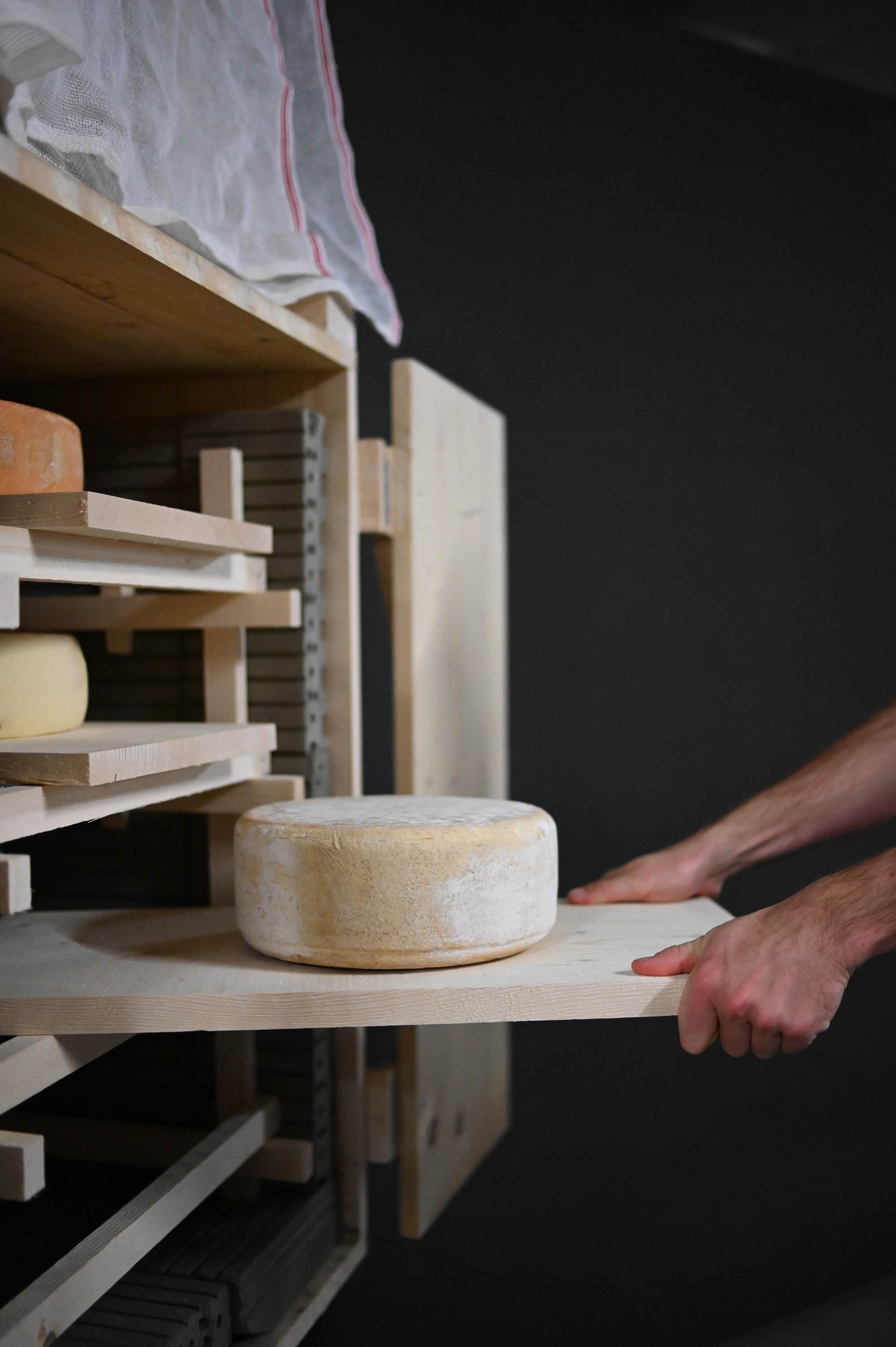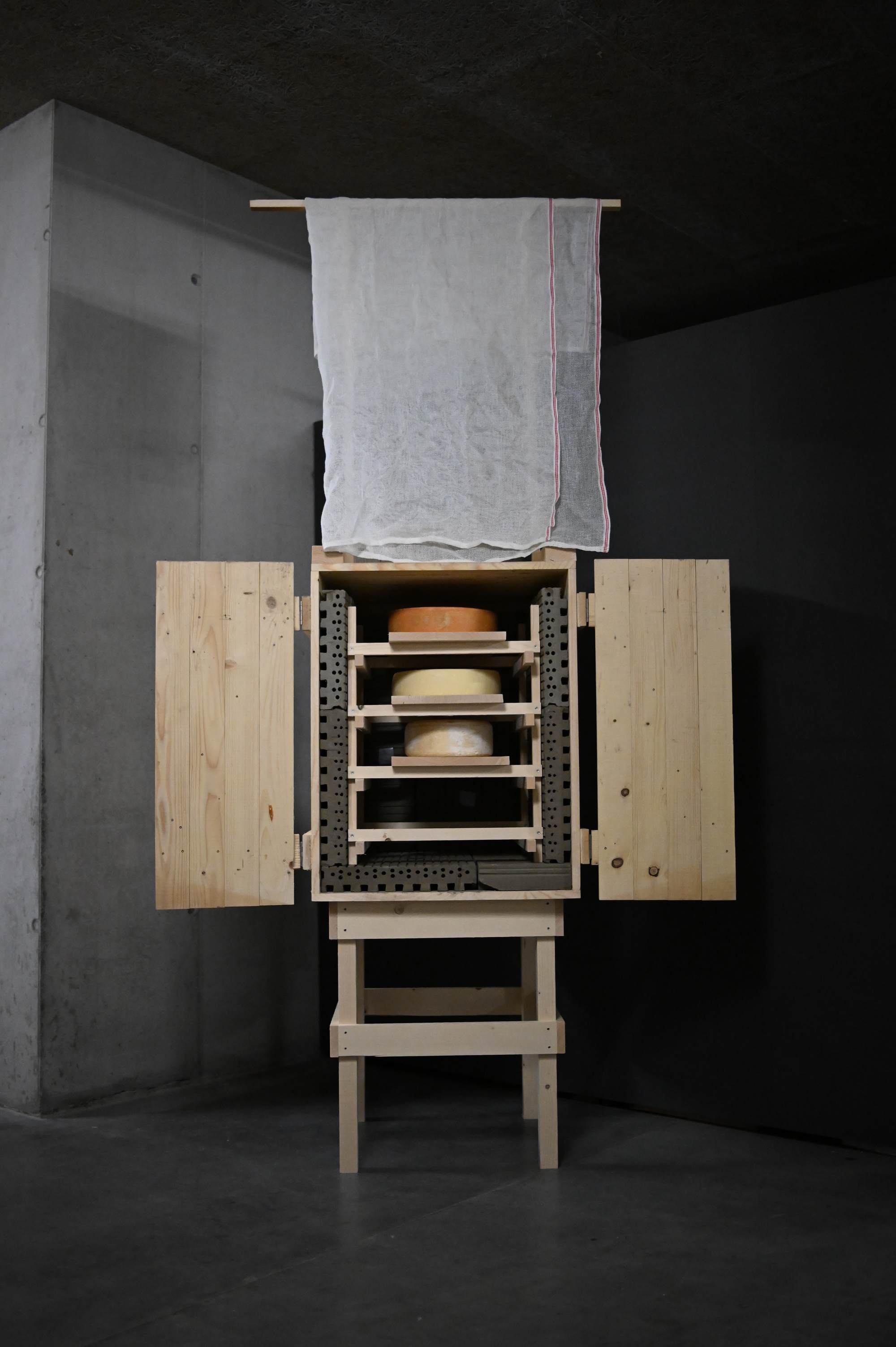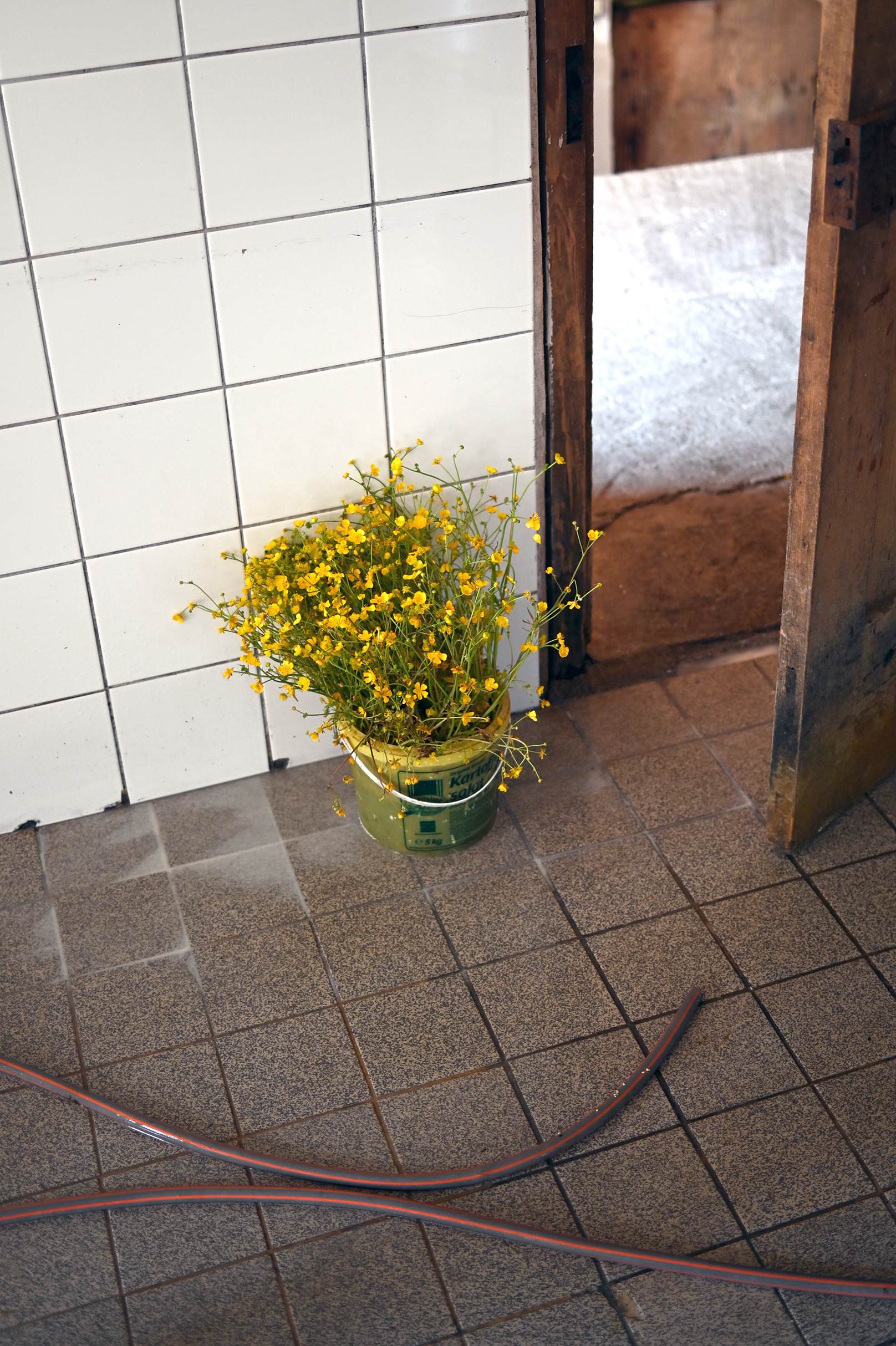Cosmopolitan Cheese
Project by Anastasia Eggers and Philipp Kolmann as a part of the Made In PlatformCheese is a medium that connects the land, animal and human and represents the relationships and interdependencies between them. Cheese that is made under traditional circumstances embodies the near-by terroir and manifests the collaboration between land, animal and human through its smell and taste. As terroir is specified by the geographical characteristics of a place but also the local cultural aspects, cheese can be seen as a product that talks about the identity of a place. Traditional cheese production is often linked to a specific location: belonging to a place adds value to a product.
Smell and taste do not take their origin primarily from microbes – their source is rather a complex interplay of organic matter. When it comes to milk, the initial product in the cheese production, each instance in the chain of its formation is a coincidental assembly of bacteria that is fused together in a product. When cheese is made, microbes feed and digest the organic material we expose to them intentionally. They are responsible for flavours and smells within fermented food products, unique to that specific geographical spot – under the premise that we as humans allow them to take influence. Although techniques and skills to maintain healthy environments often originate within the need to conserve foods over long periods of time, their flavour enhancing properties were secondary (as well as the urge to express local identity), they became an essential component of many local cuisines and contributed to the tradition that it is impossible to not think of them as manifestation of locality.
Hygiene is one of the most important criteria in this process that has an impact on the flavour profile: by choosing a hygiene culture we define a flavour profile, a language that later on allows the product to express the authenticity of its origin. The industrial character of producing cheese does not allow much scope for bacterial interference. According to European regulations, only stainless steel and plastic are supposed to interact with milk, which forces the cheesemakers to use synthetic cleaning agents in order to avoid the expansion of harmful bacteria. The production methods that derive from the restrictions are not only taking away the local and individual character from the cheese but are also destroying the symbiotic relationship with microbes and our environments. Traditional techniques, on the contrary, profit from the collaboration with bacteria: some cheese artisans still make use of the symbiosis between wood and wey. It enables them to use wood as a medium that transports good bacteria and use byproducts from cheese production as a cleaning agent. Traditional food craftsmanship is recognised as something that needs bacteria even by the European Guide for Good Hygiene Practices: there are few restrictions on materiality of tools that do not apply to the products produced in the traditional way. This way of producing does not only need bacteria to exist, but is also dependant on an interconnected network of craftsmanship that feed each other with knowledge – something that tends to be slowly disappearing as traditional production still exists, but is rather an exception than a rule.
‘Cosmopolitan Cheese’ looks at how the local identity of the cheese is constructed through the interaction with bacteria. The installation is an assembly of tools and materials that are seen as touchpoints between cheese and bacteria. In every location the travelling exhibition goes to, a cheese is created by local craftsmen and then placed in the speculative cheese cellar for ripening. The cheeses and the whey are applied on the walls of the mobile cellar contribute to the bacterial culture each time the cellar is moved. Like that, a truly cosmopolitan conditions develop – and influence the cheese ripening process.






